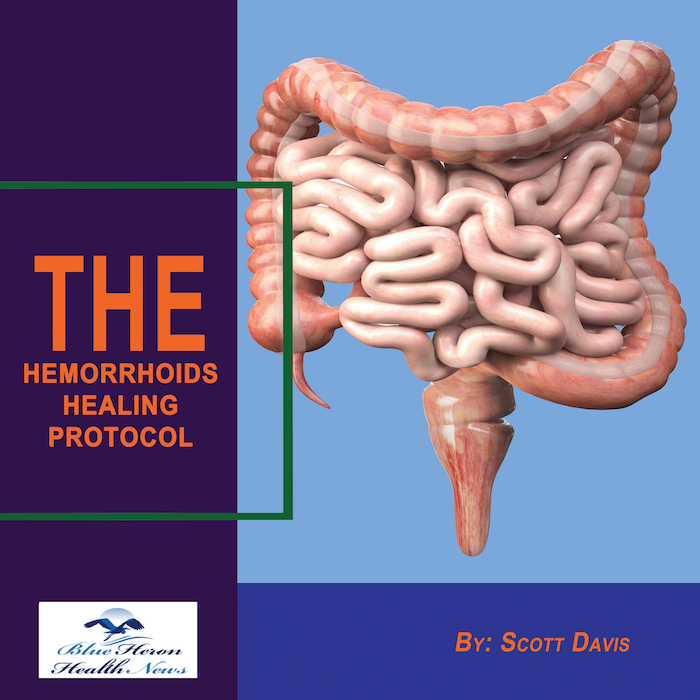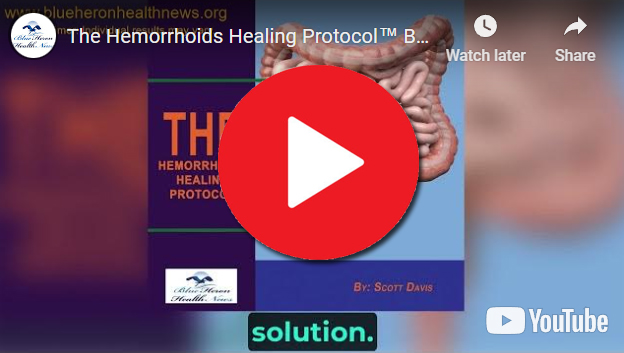
The Hemorrhoids Healing Protocol™ By Scott Davis Hemorrhoid healing protocol is a three-week online program that helps in treating and reducing hemorrhoids. It teaches gentle recipes and movements, natural and effective remedies that help in treating hemorrhoids.This program is not like the usual prescription medicines, it is a hell of a lot more than just those drugs. It focuses more on elevating the two main not so good habits that are connected to the Hemorrhoids. Overall the sole motive of this program is to remove the problem from its root instead of just treating the symptoms.
What is hemorrhoidectomy?
A hemorrhoidectomy is a surgical procedure to remove hemorrhoids, which are swollen and inflamed veins located in the rectum and anus. Hemorrhoids can cause discomfort, pain, bleeding, and itching, especially when they are large or when less invasive treatments have not provided sufficient relief. This procedure is generally recommended for individuals with severe or persistent hemorrhoids that do not respond to conservative treatments like medications, dietary changes, or office-based procedures.
Types of Hemorrhoidectomy
There are different surgical approaches for performing a hemorrhoidectomy, and the choice depends on the severity and location of the hemorrhoids (internal or external), as well as the patient’s condition and preferences:
- Conventional (Excisional) Hemorrhoidectomy
- This is the most common and traditional method of removing hemorrhoids. The surgeon cuts away the hemorrhoidal tissue and sutures the area.
- It is typically used for large internal or external hemorrhoids, especially when they cause significant discomfort or bleeding.
- It can be performed under general, spinal, or local anesthesia.
- Stapled Hemorrhoidopexy (PPH – Procedure for Prolapse and Hemorrhoids)
- In this procedure, a circular stapling device is used to remove a ring of tissue in the anal canal. This repositions the prolapsed hemorrhoids back into their normal position and reduces blood flow to the hemorrhoidal tissue, causing them to shrink.
- Stapled hemorrhoidopexy is typically used for prolapsed internal hemorrhoids (when hemorrhoids protrude outside the anus).
- It generally causes less postoperative pain compared to conventional hemorrhoidectomy but may have a higher recurrence rate.
- Laser Hemorrhoidectomy
- A laser is used to vaporize or excise the hemorrhoidal tissue. The laser cauterizes the tissue as it cuts, which may reduce bleeding and promote faster healing.
- Laser hemorrhoidectomy is typically used for smaller hemorrhoids or as an alternative for patients who prefer a less invasive approach.
- It may result in less postoperative pain and faster recovery, though the effectiveness is similar to conventional methods for severe cases.
- Closed Hemorrhoidectomy
- The hemorrhoidal tissue is excised, and the wound is closed with sutures.
- This method is used for both internal and external hemorrhoids and has a relatively low rate of complications.
- It may reduce healing time compared to open hemorrhoidectomy.
- Open Hemorrhoidectomy
- Similar to the closed method, but the surgical wound is left open to heal naturally. This method may be chosen when there is a higher risk of infection or when it’s not possible to close the wound.
- This approach may take longer to heal and cause more discomfort during the recovery period, but it may be necessary in certain cases.
Who Needs a Hemorrhoidectomy?
A hemorrhoidectomy is typically recommended for individuals who have:
- Large external hemorrhoids causing significant pain or discomfort.
- Prolapsed internal hemorrhoids that do not respond to less invasive treatments.
- Bleeding hemorrhoids that result in significant blood loss.
- Thrombosed hemorrhoids, where a blood clot forms inside the hemorrhoidal tissue, causing severe pain.
- Failure of non-surgical treatments such as dietary changes, topical treatments, or procedures like rubber band ligation (banding), sclerotherapy, or infrared coagulation.
Preparation for Hemorrhoidectomy
Before the procedure, patients typically undergo a consultation to discuss the following:
- Medical history and current medications (some medications may need to be stopped before surgery).
- Dietary changes: Patients may be advised to take a fiber supplement or stool softener to prevent constipation before surgery.
- Bowel preparation: Some surgeons recommend an enema or laxative to clear the bowel before surgery.
- Anesthesia: The patient and surgeon will discuss the type of anesthesia to be used (local, spinal, or general).
Procedure Overview
- Anesthesia is administered (general, spinal, or local) to ensure the patient feels no pain during the procedure.
- The surgeon removes the hemorrhoidal tissue, either using excision, stapling, or another method, depending on the type of hemorrhoidectomy.
- Wounds are either closed with sutures (in a closed hemorrhoidectomy) or left open to heal (in an open hemorrhoidectomy).
- The entire procedure typically takes 30 to 60 minutes, depending on the severity and number of hemorrhoids being treated.
Recovery and Aftercare
Recovery from hemorrhoidectomy can take a few weeks, during which time patients may experience some discomfort and pain, particularly during bowel movements. Here are typical aspects of recovery and aftercare:
- Pain management:
- Pain is usually managed with over-the-counter pain relievers or prescribed medications, especially for the first few days after surgery.
- Sitz baths (soaking the affected area in warm water) can also help reduce pain and promote healing.
- Bowel movement care:
- Stool softeners and a high-fiber diet are recommended to avoid constipation and reduce straining during bowel movements.
- Drinking plenty of water helps prevent constipation and keeps stools soft.
- Activity limitations:
- Patients are advised to avoid strenuous activities, heavy lifting, and long periods of sitting until fully recovered.
- Walking is encouraged to promote blood circulation and prevent blood clots.
- Follow-up:
- Follow-up visits with the surgeon may be necessary to ensure proper healing and address any complications.
Risks and Complications
While hemorrhoidectomy is generally a safe and effective procedure, there are some potential risks and complications, such as:
- Pain: Postoperative pain is common, especially during bowel movements.
- Bleeding: Some bleeding after surgery is normal, but excessive or prolonged bleeding should be reported to a doctor.
- Infection: As with any surgery, there is a risk of infection at the surgical site.
- Difficulty urinating: Some patients may experience temporary difficulty with urination due to swelling or pain after surgery.
- Fecal incontinence: Rarely, damage to the muscles in the anal area can result in temporary or long-term loss of control over bowel movements.
- Recurrence: Although hemorrhoidectomy provides long-term relief, hemorrhoids can recur, especially if risk factors like constipation or straining during bowel movements are not addressed.
Benefits of Hemorrhoidectomy
- Long-term relief: Hemorrhoidectomy provides long-lasting relief for people with severe or chronic hemorrhoids that don’t respond to other treatments.
- Effective for severe cases: It is the most effective treatment for large or prolapsed hemorrhoids that cause significant discomfort or bleeding.
- Improved quality of life: After recovery, patients often experience a significant improvement in symptoms and overall quality of life.
In summary, a hemorrhoidectomy is a surgical procedure to remove severe or persistent hemorrhoids, providing long-term relief from pain, discomfort, and bleeding. While the recovery process can involve some discomfort, most people benefit from the procedure when less invasive treatments are ineffective.
The Hemorrhoids Healing Protocol™ By Scott Davis Hemorrhoid healing protocol is a three-week online program that helps in treating and reducing hemorrhoids. It teaches gentle recipes and movements, natural and effective remedies that help in treating hemorrhoids.This program is not like the usual prescription medicines, it is a hell of a lot more than just those drugs. It focuses more on elevating the two main not so good habits that are connected to the Hemorrhoids. Overall the sole motive of this program is to remove the problem from its root instead of just treating the symptoms.
